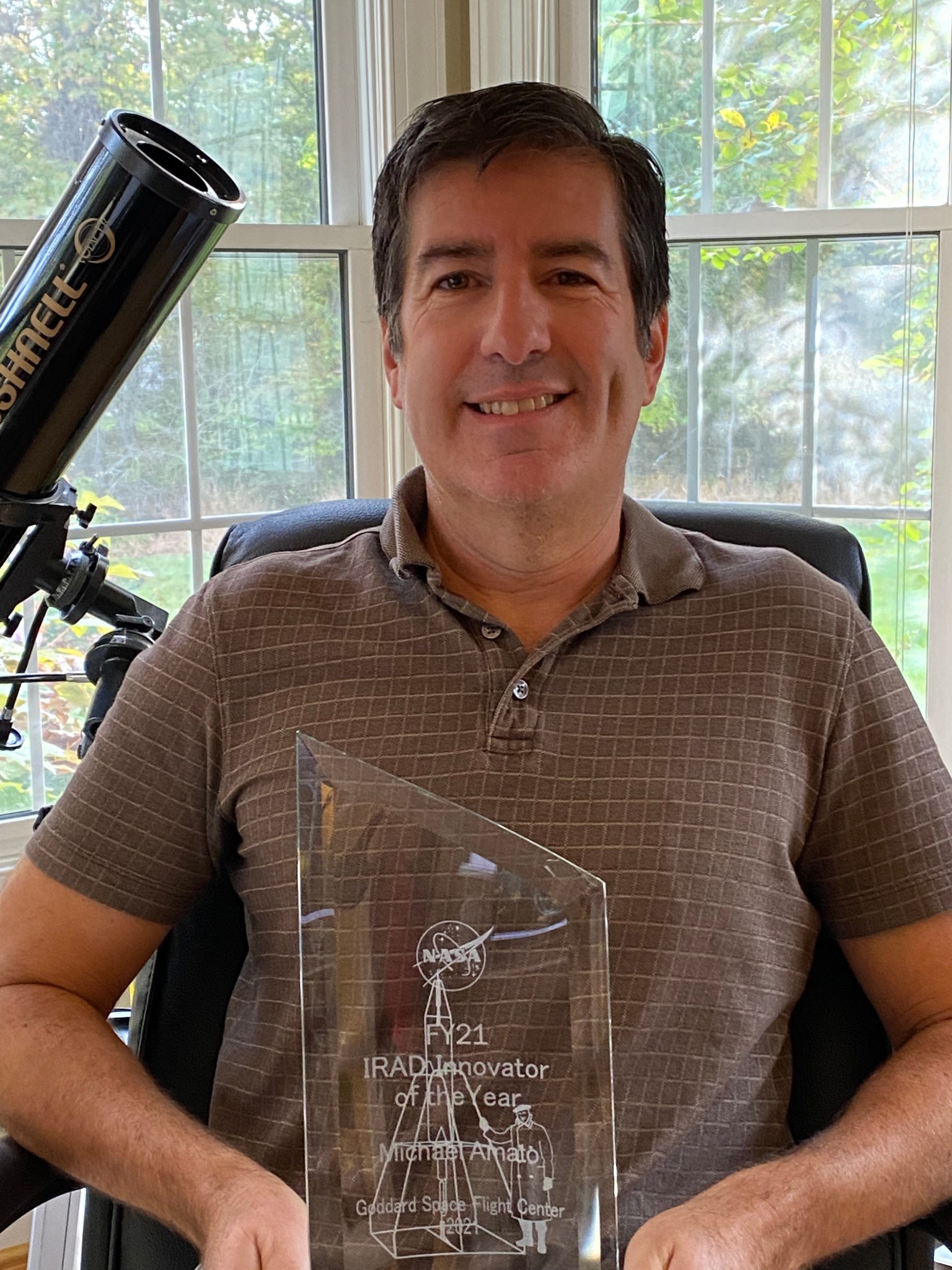Persistence, Encouragement, Innovation: Amato Helped Keep NASA’s DAVINCI Probe on Track
The concept of a NASA-led Venus deep atmosphere chemistry probe was developed and evolved over more than a decade. Through multiple mission bids starting in 2008, rejections and tailored re-designs, a team of scientists and engineers finally prevailed with the selection of the Deep Atmosphere Venus Investigation of Noble gases, Chemistry, and Imaging, or DAVINCI mission in June 2021.
Among this team of dedicated scientists and engineers, Michael Amato at NASA’s Goddard Space Flight Center in Greenbelt, Maryland, always finds the silver linings, as well as innovative ways to strengthen their mission for the next round through sustained leadership of research and development associated with the probe.
Goddard’s Office of the Chief Technologist named engineer Michael Amato as this year’s Internal Research and Development (IRAD) Innovator of the Year, an honor the office bestows annually on individuals who demonstrate the best in innovation. Amato is recognized for his work leading to the selection of the DAVINCI mission in 2021.
In 2021, NASA selected the DAVINCI mission — an in situ probe to Venus with scientific flybys and a science-guided descent to the Venus surface. The DAVINCI team is led at NASA’s Goddard Space Flight Center by Principal Investigator Jim Garvin, Deputy Principal Investigators Stephanie Getty and Giada Arney, and a project management team led by Ken Schwer, and Deputy Project Managers Arlin Bartels and Vince Elliott. Amato has been part of the team since the very first mission proposal bid in late 2008.
Fueled by six IRAD-funded technologies, and capable of carrying advanced analytical instruments into a hostile planetary atmosphere, DAVINCI will be the first NASA-built probe to explore the deepest atmosphere of Venus. It will also be the first U.S.-built Venus probe since the Hughes Aircraft Company built the 1978 Pioneer Venus Multiprobe for NASA. DAVINCI is also the first Discovery Program mission with an in situ probe carrying analytical instruments similar to those typically flown on larger Martian rovers such as Curiosity.
In helping to develop the case for DAVINCI, Amato orchestrated the IRAD engineering development of a prototype probe flight system, including window seal technology and parachute technologies capable of surviving Venus’s punishing atmosphere. His sustained dedication ultimately contributed to this exciting planetary in situ probe mission win – a first for Goddard to Venus.
Amato’s colleagues describe him as persistent and tenacious, with the strong engineering and technology connections to keep the Venus probe mission investments going through multiple proposals. Many of his technological innovations focus on helping the probe survive through the descent to protect the keystone instruments inside.
“There was a cadre of us pushing new boundaries on planetary exploration at that time,” said Garvin, who is also Goddard’s Chief Scientist, “and one of the bright young engineers involved was Michael Amato. He was the trusted, encouraging innovator who got the engineers together to keep going, even when many people said that we aren’t really the center that does planetary probe missions.”
“Mike is just an amazing innovator leading the design for these technologies while working with multiple organizations inside and outside of NASA,” Goddard Chief Technologist Peter Hughes said. “He does this on top of a ton of other projects. He’s probably the most prolific IRAD innovator within the planetary sciences.”
On receiving the award at the conclusion of the FY21 IRAD Poster Session, Amato shared the recognition with the DAVINCI team and his engineering colleagues in the Goddard community of innovators.
“Obviously it takes a team — a lot of people,” he said. “And the IRAD program is so amazing because it gives us a lot of time to pursue strategic technologies. We couldn’t do most of these things without that program.”
Picking things up as she went along, Deputy PI Arney said she’s come to know Amato as a driving force within the team.
“People really respect Michael for his ongoing work in this area,” she said. “He seems to have a large depth of knowledge about DAVINCI and its history. It really shows, especially given how some of the more experienced team members turn to him for knowledge about it.”
Deputy PI Getty said Amato puts the same vision and talents into all of his projects at Goddard.
“I’ve worked with Michael on other things for many years,” she said. “He’s a visionary who’s really dedicated to seeing something through, and he’s not easily discouraged. I would say that the DAVINCI probe work might be the prime example of these characteristics of Michael.”
Everyone on the DAVINCI team respects Amato’s drive and dedication to bring probe-related innovations to planetary sciences in general, Garvin said, even beyond this fabulous opportunity with Venus. “We can expect Michael Amato to never cease leading technology innovations to enable the next great missions that scientists cannot wait to propose and then fly.”
Banner image: DAVINCI will send a meter-diameter probe to brave the high temperatures and pressures near Venus’ surface to explore the atmosphere from above the clouds to near the surface of a terrain that may have been a past a continent. Credit: NASA’s Goddard Space Flight Center
By Karl B. Hille
NASA’s Goddard Space Flight Center in Greenbelt, Md.























